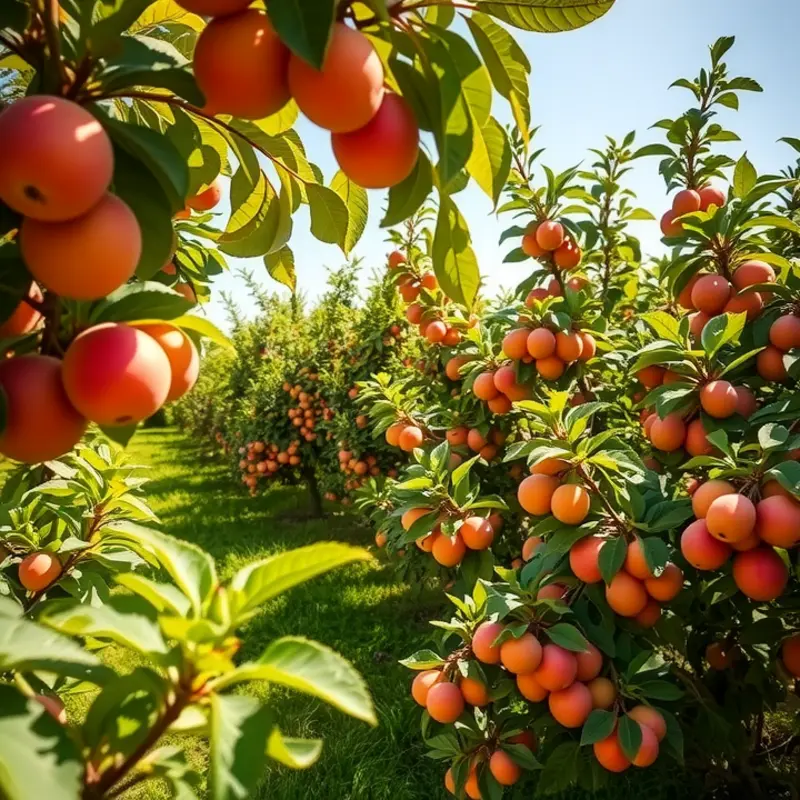Lectin avoidance diets are gaining traction among health enthusiasts who believe that reducing lectin intake can lead to improved well-being. With claims of reduced inflammation, better digestive health, and weight loss, it’s essential to delve into what lectins are, the foods they inhabit, and the rationale behind avoiding them. This overview provides clarity on the principles of lectin avoidance and practical steps for those intrigued by this dietary trend.
What Are Lectins and Their Role in Our Diet?

Lectins are proteins found in almost all plants, primarily acting as a defense mechanism. They bind to carbohydrates and can resist digestion, which means they enter our gut in an active form. Common foods containing lectins include beans, lentils, peas, peanuts, tomatoes, potatoes, and certain grains.
The interest in lectins has significantly increased due to claims about their possible negative effects on health. Lectins are known for their ability to attach to the gut lining, which might impact gut permeability. This can lead to a condition popularly known as “leaky gut,” where the intestinal barrier is compromised. Other potential outcomes include minor digestive discomforts and, in more severe cases, immune responses.
Gut health is a focal point here, considering that approximately 70% of our immune system resides in the gut. Lectins’ ability to affect gut permeability can, therefore, result in unwanted immune system reactions. However, cooking and processing methods significantly reduce lectin content in foods, minimizing their potential negative impacts.
In individuals with sensitivities, lectins can act as allergens, inducing symptoms that range from mild to severe. This is particularly a concern for people with existing allergies or autoimmune conditions. In such individuals, lectins might trigger or exacerbate symptoms. It’s worth noting that not everyone is sensitive to lectins, and they are generally safe when consumed in moderation and cooked properly.
Despite the negative discourse surrounding lectins, they do offer nutritional benefits. They are present in many high-fiber foods that are sources of vitamins, minerals, and antioxidants. These foods are integral to a balanced diet and have been linked to various health benefits like reduced risk of heart disease and diabetes.
For those considering avoiding lectins, it’s crucial to weigh these potential benefits against the proposed risks. Some people adopt a lectin-free diet to improve digestion, alleviate autoimmune symptoms, or reduce inflammation. However, long-term omission of lectin-containing foods could lead to nutrient deficiencies.
A balanced approach could involve mindful preparation and consumption rather than total avoidance. Cooking methods like boiling and soaking can reduce lectin content in foods, mitigating their potential effects. This aligns with sustainable cooking practices that minimize waste and promote health. For more on reducing waste in meal preparation, see our guide on low-waste cooking practices.
In essence, while some individuals may benefit from reducing lectin intake, especially if experiencing specific health issues, lectins remain a key part of many dietary staples. Understanding their role in nutrition and implementing cooking strategies can help balance their risks and benefits.
Implementing a Lectin Avoidance Diet: Steps and Considerations

For those contemplating a lectin avoidance diet, understanding the balance between elimination and nutritional adequacy is crucial. Begin by identifying foods high in lectins such as legumes, certain grains like wheat, and nightshade vegetables, including potatoes and tomatoes. Though this may seem challenging, a strategic approach can ease the transition.
Start by eliminating high-lectin foods gradually. This slow removal allows time to observe changes in your body and avoid sudden nutrient deficits. Consider alternatives rich in essential nutrients. For instance, instead of traditional grains, opt for pseudo-cereals like quinoa and amaranth, providing similar carbohydrate levels without the lectins. Swap legumes with animal proteins or low-lectin legumes such as green beans. Cruciferous vegetables like broccoli and cauliflower serve as excellent substitutions for nightshades.
Meal planning becomes a necessity when avoiding lectins. Prepare a week’s worth of meals at a time, leveraging fresh produce and lean proteins. Ensuring variety not only supports a balanced diet but also prevents meal monotony. Fresh ingredients should be prioritized, and frozen options used sparingly to maintain nutritional integrity. Utilize resources like this guide on minimal prep dinners to inspire efficient meal preparation.
Label reading skills are imperative. Many processed products contain hidden lectins or additives derived from high-lectin foods. Look for labels indicating “lectin-free” or “no added tomato paste” in sauces. Become familiar with terms that may disguise unwanted ingredients. Arm yourself with knowledge, and don’t hesitatate to reach out to manufacturers for clarification when necessary.
Beyond dietary changes, consider incorporating methods to reduce lectin content in foods when cooking. Pressure cooking legumes and grains is effective in diminishing their lectin levels, making them safer to consume. Fermentation is another powerful technique to not only lessen lectins but also introduce beneficial probiotics into your diet.
While the immediate health benefits of a lectin avoidance diet can range from reduced inflammation to improved digestion, monitor your body’s ongoing reactions closely. A balanced, lectin-conscious diet can also support weight management and enhance energy levels. However, always ensure that protein and fiber needs are met through alternative sources to maintain overall health.
In taking these practical steps, those embarking on a lectin avoidance journey can navigate the challenges and revel in potential health improvements. With careful planning and education, a diet low in lectins can seamlessly integrate into a healthy lifestyle.
Final words
Lectin avoidance diets can offer a pathway to improved health for those particularly sensitive to lectins or dealing with autoimmune issues. While science continues to explore the exact impacts of lectins, many have shared positive anecdotes regarding their well-being after reducing lectin-rich foods. If you’re curious about this dietary approach, consider taking gradual steps rather than an abrupt overhauling of your diet. As with any diet, consulting with a healthcare professional is advisable to tailor the ambitions to your individual health needs. Ultimately, embracing whole, minimally processed foods will foster both vitality and enjoyment in eating.








